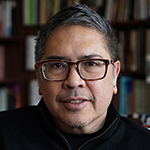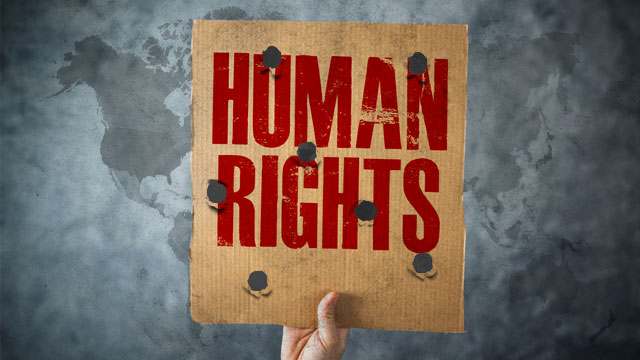
These are grim days for human rights around the world. In the United States and its former colony, the Philippines, extrajudicial killings – long practiced but often swept aside – have recently become the norm.
Is it possible to think comparatively, which is to say critically, about the connection between these two regimes of extra-judicial killings thousands of miles away: the police execution of black citizens and other peoples of color in the US on the one hand and the Presidentially-mandated, police and vigilante incited and performed executions of purported drug dealers and drug addicts in the Philippines on the other?
In the US, the targeting of black bodies has a very long history. It is rooted in centuries of racialized slavery, segregation and settler colonialism productive of and sustained by an ideology of white supremacy. The history of these practices and ideology continue to be deeply entrenched and institutionalized in militarized modes of policing which have emerged since the 1970s in response to urban insurgencies in US cities. Indeed, the history of policing in America has its roots in slave patrols – bands of armed white men employed by slave holders to keep blacks in check and search for runaways – as well as a long history of local codes designed to criminalize the mere presence of Native American and immigrants of color in urban areas. The system of discriminatory policing is also sustained by a vast prison-industrial complex. The criminal justice system in the US disproportionately incarcerates and disenfranchises people of color, placing them under constant surveillance even when they are released from prison.
The climate for extrajudicial killings has been further stoked by the ready availability of assault rifles and other high-powered guns. Thanks to the lobbying efforts of Second-Amendment fundamentalists such as the NRA and the gun industry, the US now has a heavily armed citizenry. This volatile combination of racism and guns has literally triggered the recurring murder of black people by police forces and, more recently as in Dallas, the occasional armed response by a lone black gunman.
Mostly poor
In the Philippine case, things are, of course, different.
The targets of extrajudicial killings are mostly poor. Those who are influential and wealthy are publicly accused but held off from execution and subject to investigation, such as the police generals named by President Duterte. For the poor, however, there is no due process. Suspicion or accusation is warrant enough to kill them. Their bodies are displayed, at times with signs, for everyone to see as both warning to other dealers and as marks of the will of a sovereign power, as in any public execution. Terrorizing ordinary citizens, the display of their corpses are ways for the regime to claim for itself the power of their enemies and project this power to the people.
What about the comparative responses to extrajudicial killings?
In the US, anti-racist movements such as Black Lives Matter arise to protest the killings. They draw on a long history of civil rights activism that appeal to liberal democracy even as they are critical of its discriminatory application. Media debates are intense, and the conservative press aside, there is a real debate to recast issues and put forth solutions both on the local and national level. And the US being an imperial power, it is not uncommon that racist violence at home are often linked to racist warfare abroad, and more generally the racializing inequities of global capitalism. Hence, many have pointed out the irony of President Obama denouncing both the police murders of blacks even as he presides over a kill-list of suspected terrorists in the Middle East targeted for drone assassination. The use of a robot to kill the alleged assassin of Dallas cops during a Black Lives Matter demonstration shows how the counter-terrorist weaponry used abroad has come home to roost in the US cities.

In the Philippines, social movements have yet to emerge questioning extrajudicial killings.
While some Senators and human rights advocates raise objections, no one wants to be seen as coddling or protecting those who are killed. The communist Left and its allies have so far remained circumspect over these killings in an attempt to solidify their coalition with Duterte. Some of the armed groups have even acted as vigilantes to carry out killings in the provinces. Everyone, or at least most everyone, thus assumes that those who are killed are guilty and their innocence need not be proved. They are dead because they deserve to be dead according to this solipsistic populism. They have forfeited their rights, and due process would simply be a waste of time and resources, according to this logic, since courts are corrupt and drug dealers, armed with lots of cash, will simply bribe their way out of prosecution.
Unlike the US, victims of extrajudicial killings in the Philippines start out as being racially or ethnically identical with their perpetrators. But being associated with illegal drugs renders them into a different race altogether: one deserving neither human recognition nor humane treatment. They become in the eyes of the President, the police and vigilantes, pieces of garbage polluting society and so needing to be cleared away. Their corpses then become surfaces which serve as living signs of an ominous power capable of overcoming the power of death itself.
In both the US and Philippines cases, there is thus a process of racialization that takes place. In the US, it entails the "blackening" or “browning” of bodies tantamount to their criminalization and the necessary prelude for the police to render summary judgment as to who shall live and who shall die. But the response to police violence and white supremacy is loud and swift: wide-spread opposition develops, calls are made for reform and the prosecution of guilty police, academic analysis and policy debates ensue. Even if it seems like little changes, the political and ethical stakes of opposing racialized extra-judicial killings are clear. The ready availability of cell phones to record killings have further given citizens an important tool for raising awareness and providing proof of these police murders.
In the Philippines, again, nothing of this sort has or is likely to happen.
Poor people, to begin with, have few rights that the middle class or the wealthy are compelled to recognize. From the perspective of the latter, the poverty of the former is not related to the wealth of those above; the causes of their destitution are rarely traced to the privilege of the rich; and their tendency to turn to crime, including the dealing and consumption of illegal drugs, are disconnected from any understanding of their immiseration and the precariousness of their daily lives. Historically excluded from the liberal elite democracy inherited from nationalist ilustrados, the poor exist to be exploited, their votes bought, their labor used up, their sufferings patronized and made into the material for soap operas and political sloganeering. Small wonder then that they can be easily racialized: set aside as less than human and casually killed, their deaths weighing less than a centavo on the heads of those above. By subsuming the poor as a separate race, the class-based violence of the state is also tinged with racist intent.
But what about the poor themselves? What is their understanding of extrajudicial killings?
I'm not sure and I’m not aware of much research on this topic—an absence which is itself telling of the seriousness, or lack of it, with which their views are taken by the political and cultural intelligentsia. But we can guess at some of the reasons why they stand by while the killings occur. Perhaps some support the President and the police, seeing drug dealers as non-humans with little or no rights. Perhaps they have been victimized by dealers themselves, suffering their extortions and violence. Indeed, some of those targeted have been corrupt cops known for taking bribes and selling drugs. One can imagine how their execution might seem like just deserts to those who knew them.
No doubt, the poor are also fearful of intervening directly. Bereft of resources, they feel their disenfranchisement and vulnerability on the most practical level. Rather than confront state authorities, many opt for a variety of traditional tactics to negotiate with them—from bribes to compliance, from collaboration to flight, though very rarely do the poor resort to assassination and other violent—and riskier--forms of retaliation against the police. In short, they will do anything to deflect the full force of those above while inflecting that force towards maximizing their chances for survival.
In any case, the seeming passivity, maybe even consent, of the poor to extrajudicial killings remains a real puzzle. The relative absence of collective class-based response occurs amid the sharp and finely developed sense of class-consciousness whereby the poor have a deep understanding of what it means to be poor.
This gap between action and consciousness is undoubtedly common in many places and among other classes. But in the context of extrajudicial killings aimed specifically at the poor, it stands in stark contrast to the strength of anti-racist discourse and resistance in the US. Such a contrast deserves further study. –Rappler.com
Vicente L. Rafael teaches history at the University of Washington in Seattle.